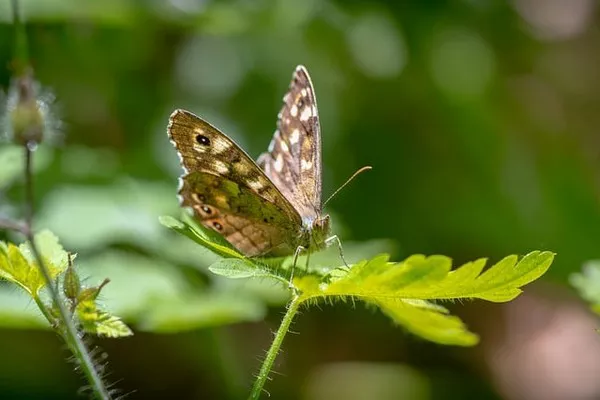In the realm of gardening, there exists a magical synergy between flora and fauna, and one of the most captivating partnerships is between plants and butterflies. Creating a garden that beckons these delicate and colorful creatures requires a thoughtful selection of plants and flowers that provide both nectar and habitat. In this article, we delve into the intricacies of attracting butterflies to your garden, exploring the symbiotic relationship between plants and these enchanting insects.
Understanding the Butterfly’s Needs
Before delving into the specific plants and flowers that attract butterflies, it’s crucial to understand the basic needs of these winged wonders. Butterflies are not only drawn to vibrant colors and sweet nectar but also require specific conditions for breeding and laying eggs. A well-rounded butterfly-friendly garden considers both the adult butterflies’ need for nectar and the caterpillars’ need for host plants.
Nectar Plants: A Banquet for Adult Butterflies
The first step in creating a butterfly haven is to provide a diverse array of nectar-rich plants. Butterflies are highly visual creatures, and they are particularly attracted to bright colors such as red, orange, yellow, and purple. Planting a variety of flowers that bloom at different times throughout the growing season ensures a continuous food source for butterflies.
Milkweed (Asclepias spp.): Known as the monarch butterfly’s host plant, milkweed is a must-have in any butterfly garden. Its vibrant flowers provide ample nectar for adult butterflies, while also serving as a crucial habitat for monarch caterpillars.
Lantana (Lantana camara): With its clusters of small, tubular flowers, lantana is a favorite among many butterfly species. It comes in various colors and is known for its prolonged blooming period, making it a reliable nectar source.
Butterfly Bush (Buddleja spp.): Aptly named, the butterfly bush is a magnet for butterflies. Its cone-shaped clusters of flowers produce copious amounts of nectar, attracting a wide range of butterfly species.
Zinnia (Zinnia spp.): Zinnias, with their vibrant hues and sturdy stems, are not only visually appealing but also a rich source of nectar. They are easy to grow and provide sustenance for numerous butterfly species.
Coreopsis (Coreopsis spp.): Often referred to as tickseed, coreopsis is a native wildflower that offers a profusion of small, daisy-like flowers. Its extended blooming period makes it a valuable addition to any butterfly garden.
Host Plants: Catering to Caterpillars
Creating a sustainable butterfly habitat goes beyond providing nectar for adult butterflies. To support the entire life cycle, including the caterpillar stage, incorporating host plants is essential. Different butterfly species have specific host plant preferences for laying their eggs and providing food for emerging caterpillars.
Common Milkweed (Asclepias syriaca): As a host plant for monarch butterflies, common milkweed is indispensable. Monarch caterpillars exclusively feed on the leaves of milkweed, making it a crucial component of any butterfly garden.
Parsley (Petroselinum crispum): Swallowtail butterflies, including the Eastern Black Swallowtail, lay their eggs on parsley and related plants. Incorporating parsley into your garden not only attracts adult butterflies but also supports their offspring.
Dill (Anethum graveolens): Similar to parsley, dill serves as a host plant for swallowtail butterflies. Its feathery foliage provides a suitable environment for swallowtail caterpillars to thrive.
Fennel (Foeniculum vulgare): With its aromatic leaves and umbrella-like clusters of yellow flowers, fennel is another favorite among swallowtail butterflies. Including fennel in your garden contributes to the overall diversity of butterfly species.
Pipevine (Aristolochia spp.): Pipevine is a host plant for the Pipevine Swallowtail butterfly. While it may not be as well-known as other plants, it plays a crucial role in supporting the life cycle of this unique and beautiful species.
Designing Your Butterfly Garden
Creating a garden that attracts butterflies is not only about the types of plants you choose but also about thoughtful design. Consider the following tips to maximize the effectiveness of your butterfly garden:
1. Provide Sun and Shade:
Butterflies are cold-blooded creatures that require sunlight to regulate their body temperature. Ensure that your garden receives both sun and shade throughout the day, allowing butterflies to bask in the warmth and find shelter when needed.
2. Create Sheltered Areas:
In addition to providing nectar and host plants, incorporate sheltered areas in your garden. Butterflies appreciate places to rest, especially during windy or rainy weather. Consider adding flat stones, log piles, or small shrubs to offer protection.
3. Avoid Pesticides:
Pesticides can be harmful to both adult butterflies and their caterpillars. Opt for natural pest control methods or choose plants that naturally deter pests. Embracing a more holistic approach to gardening ensures a healthier environment for butterflies and other beneficial insects.
4. Include Water Sources:
Butterflies need water for both drinking and puddling, a behavior where they gather around damp soil or sand to extract minerals. Create shallow water dishes or incorporate damp areas in your garden to provide essential water sources.
5. Plan for Seasonal Blooms:
To attract butterflies throughout the growing season, select a variety of plants that bloom at different times. This ensures a continuous supply of nectar, supporting butterflies from spring through fall.
Conclusion
In conclusion, the allure of butterflies in the garden is not just about their delicate beauty but also about fostering a harmonious ecosystem. By selecting a diverse range of nectar-rich flowers and host plants, and by creating a welcoming environment, you can transform your garden into a haven for butterflies. Embrace the enchanting dance between flora and fauna, and witness the magical transformation of your outdoor space into a butterfly paradise. Cultivating a butterfly-friendly garden is not just a joy for the observer; it’s a celebration of the intricate connections that sustain life in our natural world.


